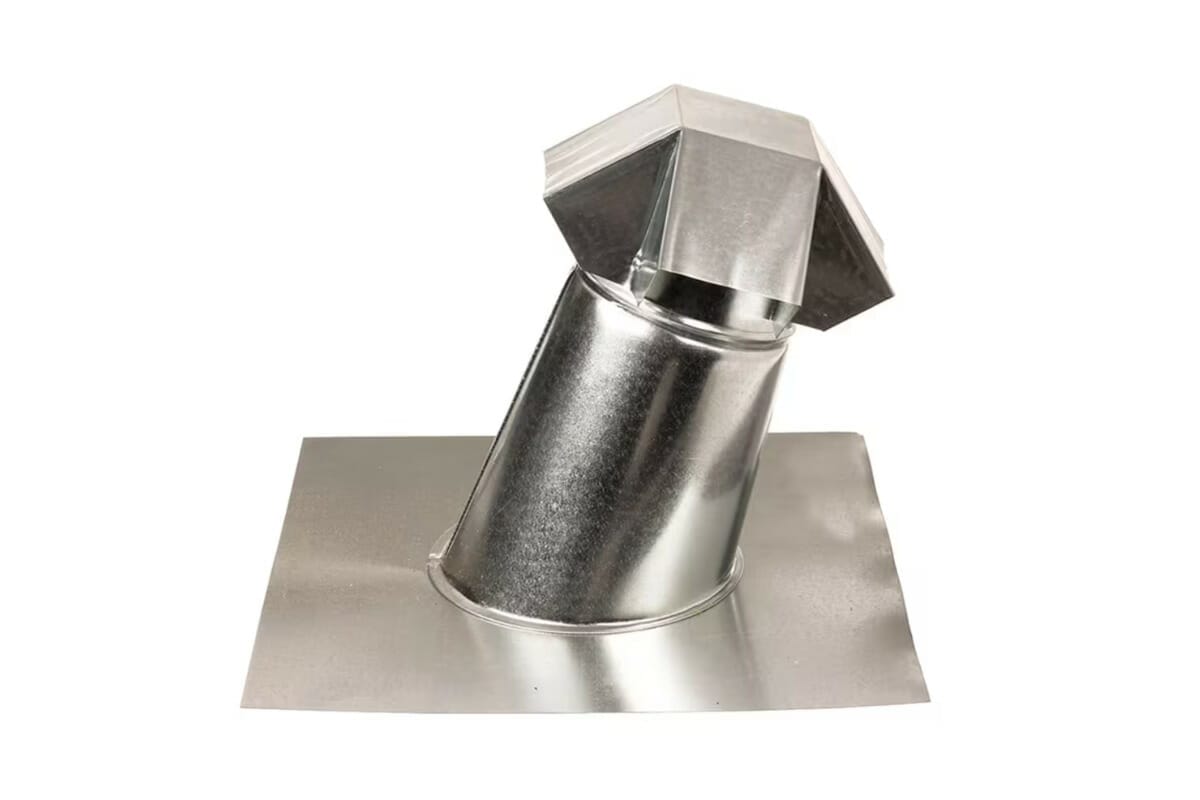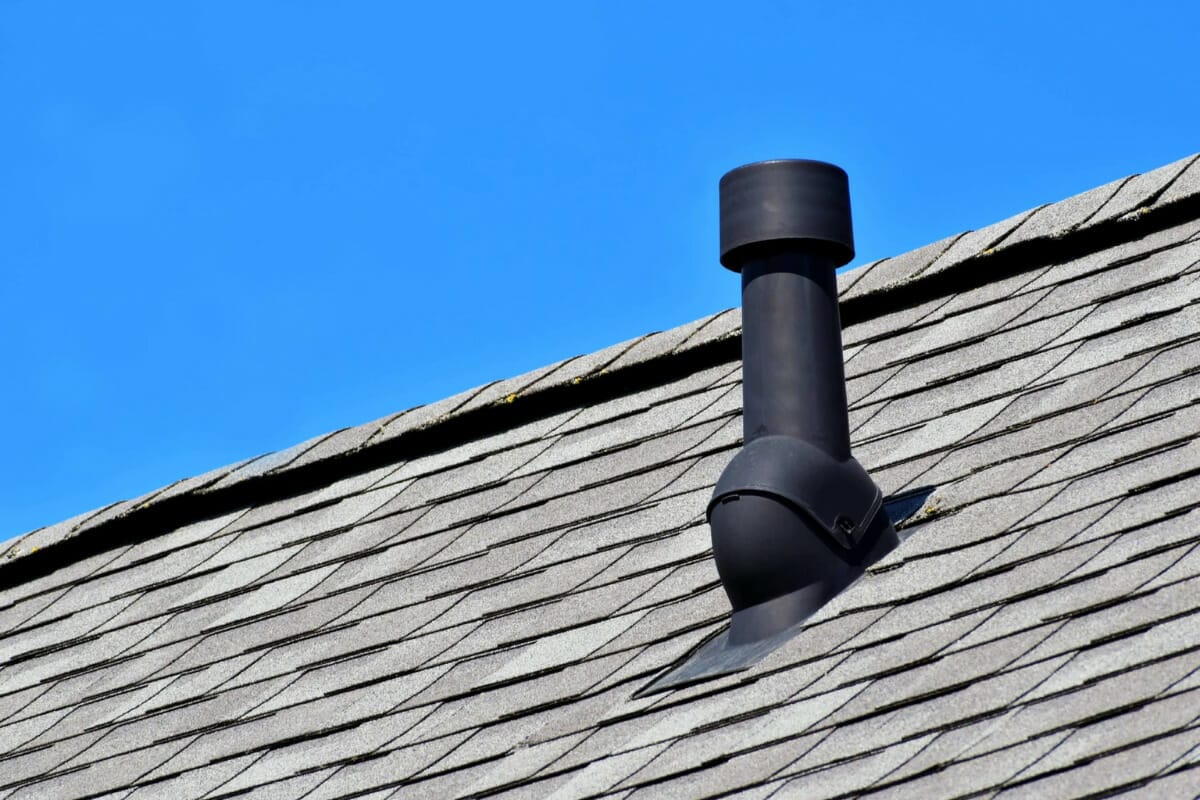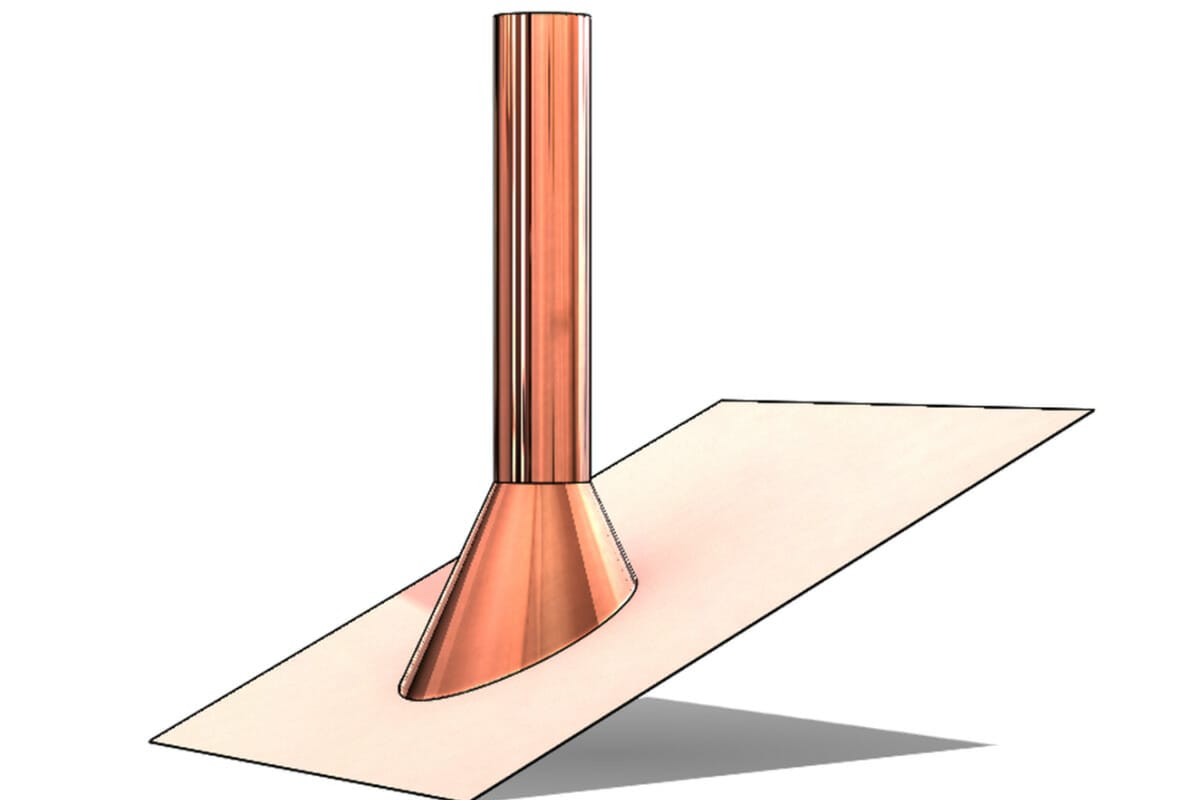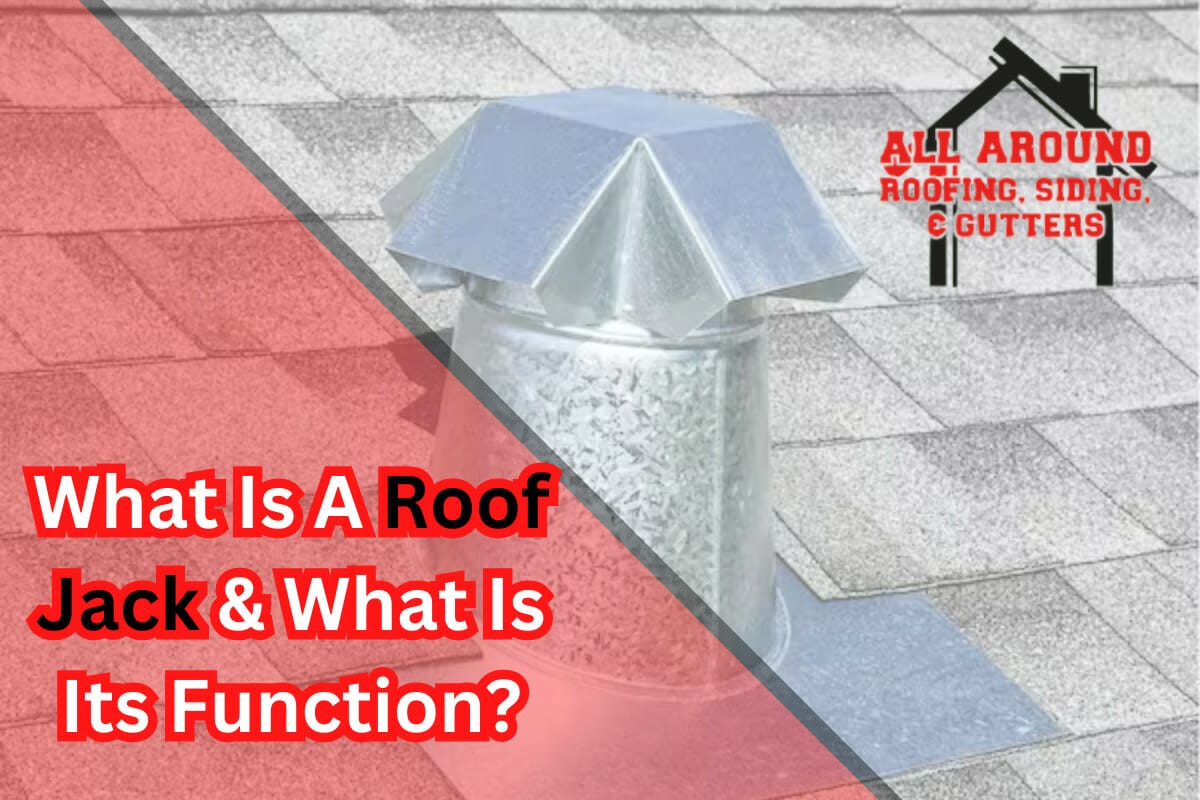As seasoned roofing professionals, we’ve come across countless homeowners who are unaware of one crucial component that plays a pivotal role in roof maintenance and longevity: the roof jack.
This often-overlooked device is instrumental in providing protection for exhaust vents that penetrate through your roof, guarding against damaging leaks caused by water and debris.
But what exactly is a roof jack? And why should it be at the forefront of your roofing project? This blog post will answer all these questions and more.
Let’s delve into the nitty-gritty world of roof jacks. We’ll discuss their varied sizes and materials, how they’re installed, and their indispensable role in extending the lifespan of your roof.
Key Takeaways
➡️ Roof jacks help prevent water and debris from entering the roof and causing leaks
➡️ They can be used with various pipes and vents
➡️ Roof jacks are available in different sizes and materials
➡️ They are relatively easy to install but can be challenging in certain cases
What is A Roof Jack?
A roof jack is a device used to protect any exhaust pipe or vent passing through the roof, essentially like a type of flashing and cover for the pipe. It plays an integral part in preventing leaks and increasing the roof’s lifespan, and it’s crucial to have it since you need ventilation in your home. It’s estimated that proper ventilation can extend a roof’s lifespan by up to 20%.
The type of roof jack varies based on the size of pipes they’re designed for and the materials they’re made from. Commonly used materials include metal and plastic due to their weather resistance and durability. They generally work by creating a seal around the top of a pipe or vent, thereby stopping water or debris from seeping into your roof. Not only do they prevent leaks but they also aid in energy efficiency by reducing heat build-up during the summer.
Now, let’s talk about cost analysis and alternative options. While these coverings aren’t free and will vary in cost depending on their size and material type, remember that it’s an investment toward maintaining your home’s structural integrity in the long run.
Some may argue that traditional methods such as ridge cap shingles could serve as an alternative, but when dealing with pipes or vents protruding through roofs, there isn’t much room for other options besides properly-sealed roof jacks.

Advantages of Roof Jacks
Roof jacks play a vital role in safeguarding your home’s interior from water and debris intrusion. While the initial cost may be considerable, the advantages they offer are well worth the investment.
Preventing Leaks and Intrusion
A properly installed roof jack serves as a reliable defense against pesky leaks caused by water and debris intrusion. By acting as a protective barrier, these vents keep your roof watertight and shield your home from potential damage over time. Without them, water could easily seep into your home, leading to costly repairs and compromising the structural integrity of your property.
Versatility and Compatibility
Roof jack vents come in various types and sizes, showcasing their versatility in accommodating different pipes and vents. This feature ensures that regardless of your specific requirements or the building’s architecture, there is likely a roof jack designed to suit your needs perfectly. Furthermore, these coverings are made from a diverse range of materials, ensuring compatibility with various types of roofs and providing options based on budget constraints and personal preferences.
Ease of Installation and Effective Functionality
Roof jack vents are relatively easy to install for most professional roofers. Their straightforward installation process reduces hassle and time, ensuring that they function effectively in protecting your home from potential leaks. However, proper installation is crucial to guarantee their effectiveness in serving their purpose optimally.
Disadvantages of Roof Jacks
While you might appreciate the advantages, it’s also important to consider some potential drawbacks of this crucial roofing component.
Initial Investment Can Be Costly
Roof jack vents can be expensive initially, especially for larger or more complex installations. In fact, according to HomeAdvisor, the average homeowner could spend between $100 and $500 on a professional installation job.
This cost could rise significantly if your roof is steeply sloped. Cost considerations should always factor into your decision-making process when contemplating alternative ventilation methods.
Can Be Vulnerable To Weather Conditions
Additionally, while they’re generally robust and durable due to their construction out of weather-resistant materials like galvanized steel or copper, these devices can become a weak point in your roofing structure over time. Exposure to harsh weather conditions like strong winds may cause additional damage or deterioration.
On another note, common installation mistakes such as improper sizing or incorrect placement can severely undermine the performance and durability of your roof jacks, hence why hiring seasoned professionals is often recommended despite the extra cost involved.

How To Install A Roof Jack
Installing a roof jack is not rocket science, but it does require some specific knowledge and skills. The first step in the installation process involves measuring the hole in your roof where the vent pipe exits, along with the top of the vent pipe. This can be a bit tricky, especially if you’re dealing with a steeply sloped roof or a tough roofing material. Once that’s done, position the roof jack over these gaps and secure it in place. The roof jack will either be metallic or plastic depending on what works best with your type of roofing.
Tools Needed
You’ll need basic roofing tools like a ladder, saw, hammer, and nails for securing flashing, among others.
Common Mistakes
One common mistake is failing to properly seal around the base of the vent, which could lead to leaks. Another is not considering how the pre-made roof jack will align and cover your exhaust vents, leading to inefficiency.
Materials Used For Roof Jacks
Choosing the right material and size for your rooftop fixture can feel like navigating a maze, yet it’s as integral to your home’s safety as locking the front door at night.
When considering roof jacks, you should weigh customization options and cost considerations against durability factors.
Roof jacks are available in various materials including:
- Plastic
- Aluminum
- Galvanized steel
- Copper

Each roof jack material has its own pros and cons. Plastic variants offer ease of installation but may lack longevity, while metal options provide superior durability but could pose more of a challenge during installation.
Making an informed decision about what type of roof jack suits your home best requires careful consideration of all these factors.
Maintaining Your Roof Jack: Tips for Longevity and Efficiency
Proper maintenance of roof jack flashing is essential to ensure its longevity and optimal performance. Here are some maintenance tips to keep your rooftop fixture in top-notch condition:
Regular Inspections
Conduct periodic checks to identify any issues like leaks or damage caused by adverse weather conditions.
Weather Resistance
Ensure that the roof jack is weather-resistant to extend its lifespan and improve energy efficiency by regulating heat loss through exhaust pipes.
Quality Materials
Use high-quality materials during installation, such as rust-proof metal or durable plastic casings, to enhance performance and durability.
Can You Install A Roof Jack Yourself?
If you are a DIY enthusiast, you might be tempted to tackle this installation yourself. But unless you have experience with roofing, it is recommended to hire a contractor to avoid costly mistakes. Professional installations tend to ensure longevity but come at a higher initial cost. Remember though, that regular maintenance checks after installation are essential to make sure everything is working as it should. Regularly checking seals for cracks and ensuring there are no debris blockages will go far in extending their lifespan and efficiency.
Best Roof Installation Services In Dayton, OH
We understand that the cost and installation challenges of a roof jack might make you hesitant to move ahead with this project. However, remember the invaluable role they play in protecting your exhaust vents and roof from water damage and how it extends their lifespan.
With the careful selection of materials, sizes, and professional installation, these vents are undoubtedly a worthy investment. Trust us, in a roofing system, a roof jack is always necessary to protect your exhaust vents!
If you need more information on roof jacks or roofing in general, all you have to do is to contact the team of All Around Roofing, Siding & Gutters. We are the best residential roofing company in Ohio and can take care of your roof. Contact us today at (937) 902-2839.
Frequently Asked Questions
A. Yes, since exhaust vent placement on various roofing styles is possible, so is the installation of a roof jack to cover it. However, material compatibility and the installation process can vary. Factors like ventilation effectiveness, weather impact, and maintenance needs must be considered for optimal performance.
A. If you are noticing exhaust issues, leaking, and water damage, these are key signs that your roof jack needs replacement. If you leave some forms of damage unattended for too long, the repair cost may increase, so proactive maintenance is crucial to check for signs that a replacement is needed.
A. Typically, a roof jack’s lifespan is around 15-30 years. Factors affecting its durability include weather impact and material degradation. Extending its lifespan relies on regular maintenance and timely replacement to boost the roofing system’s overall integrity.


